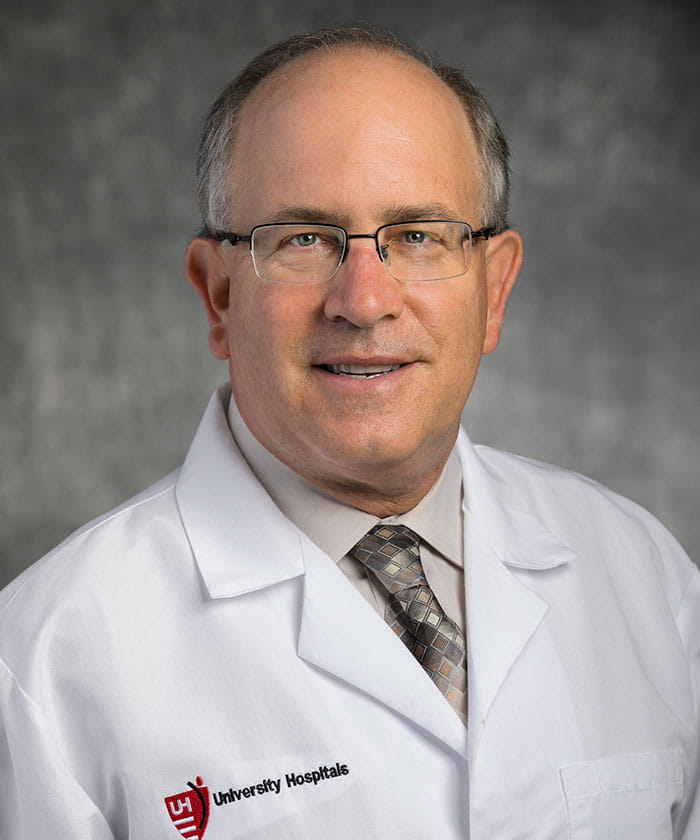UH Rainbow Among National Leaders in Surgical Outcomes for Congenital Heart Disease
March 05, 2025

Innovations in Pediatrics | Spring 2025
Infants and children undergoing surgery for congenital heart disease at UH Rainbow Babies & Children’s Hospital have among the very best outcomes in the nation, according to data recently released by the Society of Thoracic Surgeons (STS).
 Ira M. Cheifetz, MD, FCCM, FAARC
Ira M. Cheifetz, MD, FCCM, FAARCUH Rainbow, as part of The Congenital Heart Collaborative formed with Nationwide Children’s Hospital, recorded a 100% survival rate for the four-year period from July 2020 to June 2024. All congenital heart patients at UH Rainbow survived both the surgery and the associated post-operative period (defined by STS as 30-days or 24-hours after discharge, whichever is longer).
In contrast, data from STS show a national mortality rate at accredited congenital heart disease centers of 2.69%. For the most complex cases, the national mortality rate was 15.33%, while UH Rainbow again had a mortality rate of zero.
“This is remarkable. There are very few programs in the country that can boast 100% survival,” says Ira M. Cheifetz, MD, FCCM, FAARC, Chief of Cardiac Critical Care, Associate Chief Quality Officer/Patient Safety, and Medical Director of the Pediatric Cardiac Intensive Care Unit.
Dr. Cheifetz attributes these great outcomes for UH Rainbow patients to the dedication, expertise and teamwork among the interdisciplinary professionals caring for these fragile young congenital heart patients.
“The communication and decision-making processes are quite optimal,” he says.
Dr. Cheifetz, in his patient safety role, notes, “In most situations in which there is an adverse event in any area of medicine, a key contributing factor is a breakdown of communication. What we have here is outstanding interdisciplinary communication, cooperation, and partnership, thus leading to these outstanding outcomes.”
Dr. Cheifetz also notes that these latest results cross over three pediatric cardiac surgeons at UH Rainbow and at least seven pediatric intensivists – evidence of the uniform strength and depth of the congenital heart program. Outstanding results, he says, are powered by outstanding people – not by any particular technological advances.
“In terms of technology, we have what other centers have,” Dr. Cheifetz says. “It comes down to the components of the team, and a very thoughtful approach to each patient.”
One innovative approach the UH Rainbow team has adopted since affiliating with Nationwide Children’s Hospital in The Congenital Heart Collaborative is a “PROMISE call” initiative that carefully considers all aspects of care for complex cases with involvement of each perspective of the interdisciplinary team, generally the day prior to surgery.
“The PROMISE calls are open to our clinical heart team, whether they attend in person or via Zoom. Everyone is included -- the on-service care providers, our attendings, fellows, nurse practitioners, nurses, and others,” Dr. Cheifetz says. “We often have 30 to 35 people on one of these calls, even if it occurs at 8 o'clock in the evening because that's the time that works best for the direct patient care team. We discuss anything that has changed since our weekly Care Conference, the detailed plan for the surgical procedure, and any anticipated challenges in the operating room and the immediate post-operative course. We want to make sure that everyone agrees with the plan before we proceed. Then, the next day, two hours or so post-surgery, we have another team discussion to review the operative course, including any challenges that may have been encountered, and then we discuss the interdisciplinary management plan for that night.”
Daniel Nento, MD, Chief of the Division of Pediatric Cardiac and Thoracic Surgery at UH Rainbow, highlights the incredible challenges inherent in caring for these young patients with congenital heart disease.
“We perform open-heart surgery from simple congenital malformations to the most complex ones, including neonates, even premature babies with a weight of 450 grams, as well as adults with congenital malformations,” he says. “Technology is invaluable in preparing for the most complex cases, including virtual reality and 3D heart models.”
But, like Dr. Cheifetz, Dr. Nento credits the dedication and expertise of the team for the successes they have seen for their congenital heart patients.
“We have remarkable teamwork, including OR nurses, physician assistants, anesthesiologists and surgeons,” he says.
For more information about surgery for congenital heart disease at UH Rainbow Babies & Children’s Hospital, please email Peds.Innovations@UHhospitals.org.
Contributing Experts:
Ira M. Cheifetz, MD, FCCM, FAARC
Chief of Cardiac Critical Care
UH Rainbow Babies & Children’s Hospital
Professor of Pediatrics
Case Western Reserve University School of Medicine
Daniel Nento, MD
Division Chief, Pediatric Cardiac and Thoracic Surgery
UH Rainbow Babies & Children’s Hospital
Associate Professor of Pediatrics
Case Western Reserve University School of Medicine


